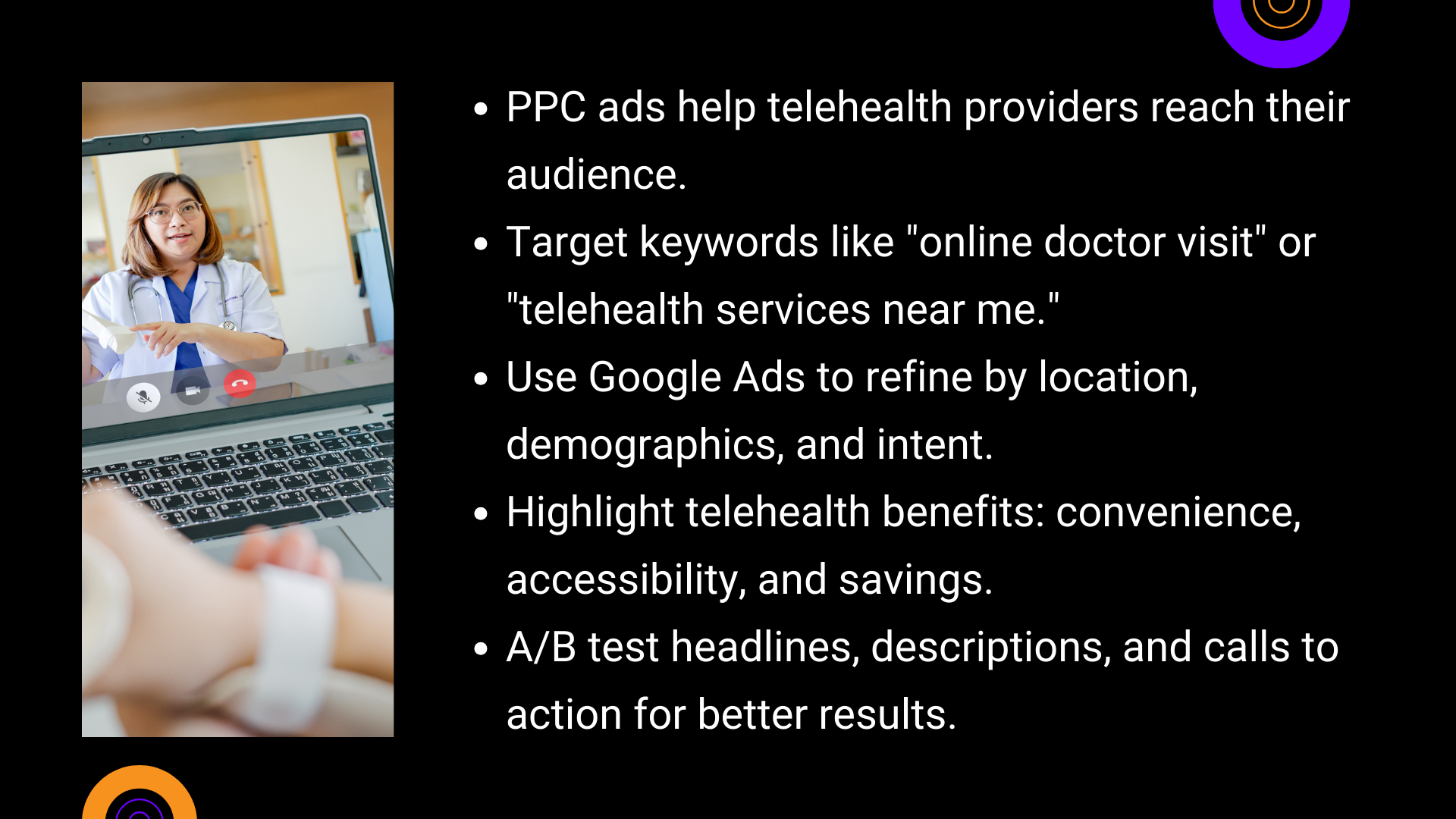Unlocking Success with Telehealth Marketing Strategies
Telehealth is revolutionizing global healthcare delivery. The fast growth results from developments in digital technology and an unheard-of demand for remote healthcare solutions. This increasingly competitive environment requires strategic and effective telehealth marketing to succeed.
Understanding the Telehealth Market
Adoption of telehealth has surged; in the next few years, use is predicted to rise by over 32% yearly. Telehealth services are now essential because over 80% of patients anticipate digital healthcare. For those that make strategic marketing investments, this offers amazing chances to grab and involve this audience.
Challenges and Opportunities in Digital Healthcare Marketing
While telehealth demand is rising, it also presents problems including educating existing patients on how to use these services, creating trust in a virtual setting, and managing complex compliance rules. Though they seem daunting, these challenges also create special chances for healthcare providers to differentiate themselves by creating careful campaigns, providing easy-to-use advice, and creating original ideas addressing these issues. Telehealth providers may build stronger patient relationships and set a new standard for accessible, trustworthy treatment by addressing these concerns.
Top Telehealth Marketing Strategies That Actually Work
 1. Search Engine Optimization
1. Search Engine Optimization
Telehealth content optimization requires tailored strategies that match audience intent and search engine algorithms. Investigate thorough keywords first to find high-ranking, long-tail terms. Use these keywords naturally in titles, meta descriptions, headers, and content to improve relevance and discoverability.
Another equally important component is producing strong, trustworthy content. Answer common questions to establish your website as a resource. Structured data, including schema markup, can improve the likelihood that your content will show up in rich results or highlighted snippets.
Add location-specific keywords and list your services on Google My Business for local SEO. Essential digital features affecting better outcomes are fast-loading pages, mobile optimization, and secure websites. Keeping statistics and strategies in mind can make your telehealth content competitive and impactful in search engine results.
2. Content Marketing
A strong telehealth marketing plan is built on content marketing, especially if it is oriented toward audience education. By offering useful, pertinent, and pragmatic knowledge, virtual healthcare services can establish themselves as reliable authorities in the medical field. Blogs covering common health questions, infographics outlining how telehealth services operate, or video tutorials guiding people through virtual appointment setup can all be part of educational content.
Content marketing requires knowing the audience’s pain areas. While telemedicine services could be more interested in how these platforms might improve medical outcomes or lower operational inefficiencies, patients may need knowledge of the comfort and security of telehealth. Creating content to answer such questions promotes trust and engagement.
Including SEO best practices also guarantees that telehealth content marketing finds its target audience. Continuous, data-driven content creation and clear calls to action can turn educational materials into lead-generation tools.
3. Social Media Campaigns
Sharing patient success stories on social media is a great approach to promoting telehealth services. Testimonials and case studies enhance audience trust and humanize your brand. Use videos or infographics to express these experiences authentically and relatable. Potential consumers may be moved by a brief video of a patient expressing how telehealth improved their care. Additionally:
- Share brief patient success stories on Instagram Stories, Facebook Reels, or LinkedIn.
- Encourage happy patients to submit Google reviews.
- Ask patients to tag your organization in social media posts about their experiences.
-
Promote success stories to improve telehealth marketing credibility and confidence.
4. Google Performance Max
Virtual health services seeking to expand their reach and optimize their marketing efforts might use Google Performance Max campaigns. These campaigns use machine learning to evaluate Google’s Search, YouTube, Display, Gmail, and Discover data to show the target audience the most appropriate commercials.
Performance Max uses dynamic ad creatives and intent-based targeting to help healthcare providers reach the correct audience. Ads can offer virtual consultations, chronic disease management, or mental health help to reach users searching for connected solutions.
Performance Max optimizes efficiency and provides detailed performance data by centralizing campaign management. Telemedicine services can identify high-return audiences, keywords, and platforms for data-driven decision-making. This solution streamlines marketing telehealth services and ensures telehealth services reach the most needy patients, increasing engagement and conversions.
 5. PPC Advertising
5. PPC Advertising
Pay-per-click advertising can help healthcare organizations contact certain audiences. Create location, demographic, and search intent-targeted campaigns using Google Ads. Write attractive ads that showcase your telehealth services’ convenience, accessibility, and cost savings. Use A/B testing to improve ad performance by testing headlines, descriptions, and calls to action.
Spend money on remarketing ads to re-engage website visitors who didn’t convert. Keep track of campaign performance and change based on data to maximize ROI. PPC’s telehealth marketing strategy helps your telemedicine services grow by attracting new patients at a low cost.
6. Email Marketing
Email marketing can attract patients and enlighten them about your telehealth services. Build a segmented email list by patient demographics, health requirements, or appointment history for focused communication. Share new telehealth platform features, virtual consultation ideas, and audience-specific health information via newsletters.
To increase interaction, write fascinating subject lines that justify opening the email. Use attractive, mobile-friendly visuals with clear calls to action. Address patient concerns or highlight remote care’s convenience and quality to provide value.
Automate email marketing for new patient onboarding, wellness promotions, and annual checkup reminders to retain patients. Your company can build trust, maintain patient relationships, and use email marketing as an important telehealth marketing tactic by constantly sending useful and engaging emails.
Measuring Success & Optimizing Marketing Efforts
Tracking Key Metrics
Use website traffic, conversion rates, and patient retention to evaluate your marketing and make changes. Traffic metrics reflect how many people visit your site, whereas conversion rates demonstrate how well they book appointments. Patient retention indicates how successfully your practice fosters long-term growth and loyalty.
Analytics and Optimization
Google Analytics and marketing tools can provide practical insights to increase audience understanding and strategy. A/B testing can test email subject lines, landing page designs, and ad copy. Compare the performance of these variations to find out what your audience likes and improve your telehealth digital marketing. An iterative process allows for continual improvement and maximizes marketing effectiveness.
Continuous Improvement
Marketing is not a “set it and forget it” process. Success demands constant effort, analysis, and adaptability. Regularly analyze your results to determine what’s working and adjust your methods. Stay current with technology, and customer behavior to keep your strategy effective.
Conclusion
Telehealth services have revolutionized patient treatment by providing unprecedented accessibility and convenience. However, reaching this developing market requires well-planned and implemented telehealth marketing strategies targeted to this business.
Start with a user-friendly website that clearly communicates offerings and benefits to build a strong digital presence. Social media lets providers connect with patients, provide health information, and establish trust. A strong SEO strategy helps patients find telehealth providers online.
Successfully reaching target audiences while adhering to HIPAA standards is key. Telehealth providers may stand out in a competitive market and build long-term patient connections by focusing on patient-centered marketing.
Want assistance tailoring your telehealth marketing strategy? Contact our telehealth digital marketing agency today — we guarantee sustainable growth and help you unlock your business potential!


